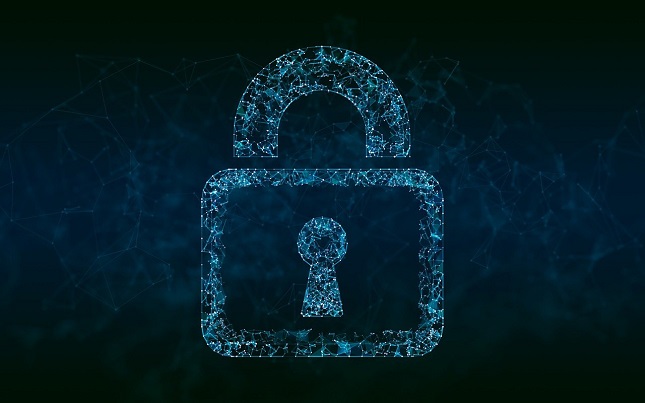Today, businesses of all sizes are increasingly vulnerable to cyber threats. From data breaches to ransomware attacks, inadequate cybersecurity can be devastating, leading to financial losses, reputational damage, and legal liabilities. Implementing robust cyber protection measures is no longer optional but necessary for safeguarding sensitive information and ensuring business continuity.
This guide outlines practical steps your business can take to strengthen its cybersecurity posture.
Understand the Threat Landscape
Before implementing cybersecurity measures, it’s essential to understand the evolving threat landscape. Cybercriminals are constantly developing new tactics to exploit vulnerabilities in systems and networks. Some common threats include phishing attacks, malware, ransomware, and advanced persistent threats (APTs). Your business must stay informed about these security risks and adopt proactive mitigation strategies.
One effective approach is to leverage comprehensive solutions to detect, prevent, and respond to sophisticated cyber threats. These services typically include real-time monitoring, threat intelligence, and automated response mechanisms to protect your business against emerging risks.
Conduct a Cybersecurity Risk Assessment
The first step in implementing cyber protection measures is to conduct a thorough risk assessment. This process involves identifying critical assets, evaluating potential vulnerabilities, and assessing the likelihood and impact of various known and unknown threats. A risk assessment can help your business prioritize its cybersecurity efforts and allocate resources effectively.
Some key components of a risk assessment include:
- Asset Inventory: Identify all hardware, software, and data assets that require protection.
- Threat Analysis: Evaluate potential threats, such as hackers, insider threats, and natural disasters.
- Vulnerability Assessment: Identify weaknesses in systems, networks, and processes that attackers could exploit.
- Impact Analysis: Determine the potential consequences of a security breach, including financial losses, operational disruptions, and reputational damage.
By conducting a cybersecurity risk assessment, you can keep your business safe against threats for a long time.
Develop a Cybersecurity Policy
A well-defined cybersecurity policy serves as the foundation for protecting business assets. This policy should outline the organization’s approach to cybersecurity, including roles and responsibilities, acceptable use of technology, and incident response procedures. It should also align with industry standards and regulatory requirements.
Some key elements of a cybersecurity policy include:
- Access Control: Define who has access to sensitive information and systems and implement measures such as multi-factor authentication (MFA) to prevent unauthorized access.
- Data Protection: Establish protocols for encrypting sensitive data, both in transit and at rest, to ensure confidentiality and integrity.
- Employee Training: Educate employees about cybersecurity best practices, such as recognizing phishing emails and using strong passwords.
- Incident Response Plan: Develop a clear plan for responding to security incidents, including steps for containment, investigation, and recovery.
Implement Advanced Threat Protection Services
To combat sophisticated cyber threats, your business should consider investing in innovative solutions. Advanced threat protection services, for instance, can provide advanced tools and technologies to detect and respond to threats in real time. Features typically include endpoint protection, network security, and cloud security solutions.
For example, endpoint protection solutions can safeguard devices such as laptops, smartphones, and tablets from malware and unauthorized access. Network security measures, such as firewalls and intrusion detection systems (IDS), can also help monitor and control incoming and outgoing traffic. Lastly, cloud security solutions can protect data stored in cloud environments, ensuring compliance with industry regulations.
Partner with Cybersecurity Specialists
If your business lacks in-house expertise, partnering with cybersecurity specialists can be cost-effective. SLC cybersecurity specialists or similar locations, for instance, offer tailored services to address specific security needs, from risk assessments to managed security services. These experts can help your business implement robust security measures, monitor systems for potential threats, and respond to incidents promptly.
Managed security services can also provide 24/7 monitoring and support, ensuring your business is protected 24/7. Cybersecurity specialists can assist with compliance audits, helping your organization meet regulatory requirements such as GDPR, HIPAA, and PCI DSS.
Encrypt Sensitive Data
Data encryption is a fundamental component of cybersecurity. Encrypting sensitive data ensures that even if it’s intercepted or accessed by unauthorized parties, it can’t be read or used. Your business should implement encryption for data at rest (stored data) and data in transit (data being transmitted over networks).
Some common encryption methods include Advanced Encryption Standard (AES) and Secure Sockets Layer (SSL)/Transport Layer Security (TLS) protocols. Encryption should also be applied to sensitive information such as customer data, financial records, and intellectual property.
Back Up Data Regularly
Data backups are a crucial safeguard against data loss caused by cyberattacks, hardware failures, or natural disasters. Your business should implement a regular backup schedule and store backups in secure, offsite locations. Cloud-based backup solutions offer scalability and accessibility, ensuring that data can be restored quickly in the event of an incident.
It’s also important to test backups regularly to verify their integrity and ensure that data can be recovered successfully. A robust backup strategy should include full and incremental backups to minimize data loss and reduce storage requirements.
Educate Employees on Cybersecurity Best Practices
Human error is one of the most common causes of cybersecurity issues. Educating employees on cybersecurity best practices is essential for reducing potential risks. Training programs should cover topics such as password hygiene, recognizing phishing attempts, and securely handling sensitive information.
Moreover, regular training sessions and simulated phishing exercises can help reinforce good habits and keep employees vigilant. Your business should also encourage a culture of cybersecurity awareness, where employees feel comfortable reporting potential threats or vulnerabilities.
Final Thoughts
Implementing cyber protection measures is a multifaceted process that requires a proactive and comprehensive approach. By keeping the information mentioned above in mind, your business can significantly reduce its vulnerability to cyberattacks. A strong cybersecurity strategy ultimately protects business assets and builds trust with customers and stakeholders, ensuring long-term success in an increasingly digital world.








































